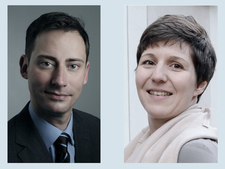-
Topics
subnavigation
Topics
Electromagnetic fields
- What are electromagnetic fields?
- Static and low-frequency fields
- Radiation protection relating to the expansion of the national grid
- High-frequency fields
- Radiation protection in mobile communication
Optical radiation
Ionising radiation
- What is ionising radiation?
- Radioactivity in the environment
- Applications in medicine
- Applications in daily life and in technology
- Effects
- What are the effects of radiation?
- Effects of selected radioactive materials
- Consequences of a radiation accident
- Cancer and leukaemia
- Genetic radiation effects
- Individual radiosensitivity
- Epidemiology of radiation-induced diseases
- Ionising radiation: positive effects?
- Risk estimation and assessment
- Radiation protection
- Nuclear accident management
- Service offers
-
The BfS
subnavigation
The BfS
- About us
- Science and research
- Laws and regulations
- BfS Topics in the Bundestag
- Links
National and international measurement systems monitor radioactivity in the environment
BfS introduces early warning system for radioactivity
"Can the nuclear accidents in Japanese nuclear power plants also pose a risk for Germany? And how do we know whether a radioactive cloud moves towards Germany?"
Currently many people pursuing the developments in Japan pose these questions.
Due to the design of the affected reactors, to the damage that has been caused so far and the large distance to Japan no special radiation protection measures need to be taken in Germany according to the knowledge gained so far. The Federal Office for Radiation Protection (BfS) assumes that with sensitive measurement technology enhanced radioactivity in the atmosphere may also be detected in Germany. However, the measured values to be expected will not reach levels where they could cause harm.
Among others, the spreading of radioactivity as a result of the nuclear accidents in Japan can be pursued with the help of a world-wide network of about 80 measurement stations. On the Schauinsland mountain near Freiburg the Federal Office for Radiation Protection (BfS) operates the measurement station for Central Europe which is part of an international network under the direction of the UN. With the help of this international network it is possible to pursue and forecast where the discharged radioactivity will move. This can be done a long time before it arrives here in Germany.
The BfS thus operates an early warning system for radioactivity in Germany which continuously measures with highly sensitive systems the radioactivity in the air. The automatic measurement systems installed in Freiburg are capable of detecting even the slightest concentrations of radioactivity bound to airborne particles and radioactive rare gases. Every two hours the data is forwarded via satellite link to the international UN data centre.
Nation-wide measurement network
Furthermore the BfS operates nation-wide a comprehensive measurement network consisting of approx. 1,800 measurement probes which continuously measure the external radiation exposure. The measured data is available at www.bfs.de. The BfS established this so-called Integrated Measurement and Information System (IMIS) as a result of the experiences gained from the Chernobyl reactor accident in 1986. The task of IMIS is to monitor the environment continuously. Already slight changes in the level of environmental radioactivity can be detected quickly and reliably all over the country.
In case of a nuclear emergency in Germany the BfS is in a position to forecast with the help of the different measurement systems up to 72 hours in advance how a radioactive cloud will spread and what radiation exposures to man and environment will result from this. On the basis of weather and release forecasts it will then be calculated in case of a reactor accident:
- What areas are affected and what are the exposure levels?
- What radionuclides play a role?
- What is the current and the expected radiation exposure to people in the affected areas?
On this basis, the federal and federal state authorities competent for defence against nuclear hazards can quickly decide what measures need to be taken to protect the population from the harmful effects of radioactivity.
The external radiation exposure (=ODL = "Ortsdosisleistung", ambient dose rate) is automatically measured nation-wide every ten minutes at 1,800 measurement stations. So the distribution of radioactive substances can be pursued. Thus the affected areas are identified and the current external radiation exposure of the population is determined.
The investigations made by the BfS are complemented by other measurement systems: At 52 stations Germany's National Meteorological Service measures the radionuclide composition and concentration in the air, which enables a good estimation of the level of radiation exposure due to inhalation of radionuclides. The Federal Institute of Hydrology measures continuously the radionuclide concentration in rivers, the Federal Maritime and Hydrographic Agency does this in the North and Baltic Seas.
Measurements will continue also after a radioactive cloud has passed and, if required, could be complemented by the following information:
- Measurements via helicopter and measurement vehicles.
- The exposure of the soil due to deposited radionuclides is measured. Together with the ODL measurements the contamination of the environment can be depicted in the form of contamination maps.
- The federal states determine the radioactive contamination of food, animal feed and other media.
All measurement results, dose estimations and forecasts are collected by the BfS and are depicted in the form of charts and maps in a comprehensible way. They are made available on a server (=ELAN, electronic situation report).
State of 2011.03.16



